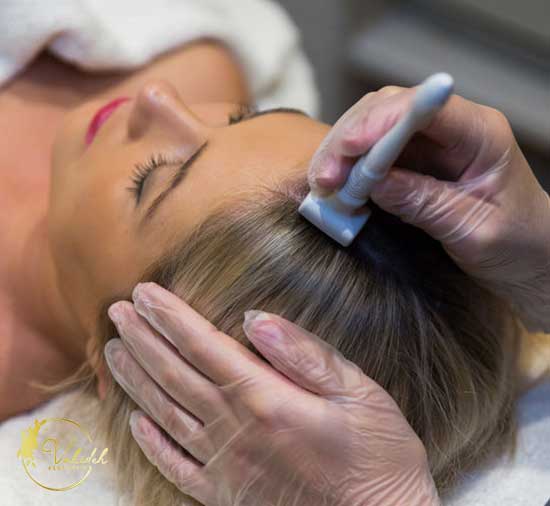
benefits of Microneedling hair loss
- Thicker Hair
- Reduced Hair Loss
- Improved Hair Quality
What is Microneedling hair loss?
Microneedling for hair loss is a minimally invasive procedure that involves using a device with tiny needles to create microscopic punctures in the scalp.
How it works:
Triggers Collagen Production: The micro-injuries created by the needles stimulate the body’s natural wound healing response, leading to increased collagen production in the scalp.
Improved Blood Flow: Microneedling can increase blood flow to the hair follicles, delivering essential nutrients and oxygen.
Enhanced Growth Factor Release: The process may also stimulate the release of growth factors, which can promote hair follicle activity and stimulate hair growth.
Potential Benefits:
Thicker Hair: May increase hair density and make hair appear fuller.
Reduced Hair Loss: May slow down or stop hair loss in some cases.
Improved Hair Quality: May improve hair strength, shine, and overall condition.
Important Considerations:
Professional Administration: Microneedling for hair loss should always be performed by a qualified and experienced healthcare professional (like a dermatologist or a doctor specializing in hair restoration).
Multiple Sessions: Multiple sessions are typically required to achieve optimal results, usually spaced a few weeks apart.
Potential Side Effects: Mild side effects such as redness, swelling, and pinpoint bleeding are possible but usually subside within a few days.
Not a Cure-All: Microneedling for hair loss may not be effective for everyone, and results can vary.
Treatment step-by-step
Consultation
- Thorough Assessment: You’ll have a comprehensive consultation with a qualified healthcare professional (like a dermatologist or a doctor specializing in hair restoration).
- Medical History Review: They will review your medical history, current medications, and any allergies.
- Hair Loss Assessment: They will thoroughly assess your hair loss pattern, including the extent of thinning and any underlying causes.
- Treatment Plan: Based on your individual needs and goals, they will create a personalized treatment plan, including the number of sessions recommended and the depth of needle penetration.
Skin Preparation
- Cleansing: The treatment area will be thoroughly cleansed to remove any oil or debris.
- Numbing (Optional): A topical anesthetic cream may be applied to the scalp to minimize any discomfort during the procedure.
Microneedling
- Device Selection: The professional will select the appropriate microneedling device and needle depth based on your individual needs and treatment goals.
- Needling: The device, which contains tiny needles, is gently rolled or stamped over the scalp, creating microscopic punctures.
- Treatment Area: The procedure is typically performed on the areas of hair thinning.
- Needle Depth: The depth of needle penetration is crucial and should be determined by the healthcare professional based on your individual needs and the desired treatment outcome.
Post-Treatment Care
- Serum Application: A serum containing growth factors, hyaluronic acid, or other beneficial ingredients may be applied to the scalp to enhance the treatment’s effects.
- Soothing: A calming mask or moisturizer may be applied to soothe the scalp.
- Sun Protection: The professional will emphasize the importance of using a broad-spectrum sunscreen with an SPF of 30 or higher daily.
Post-Treatment Care Instructions
- Avoid Sun Exposure: Avoid direct sun exposure for at least 24 hours after the treatment.
- Gentle Cleansing: Use gentle, fragrance-free cleansers to avoid irritating the scalp.
- Hydration: Keep the scalp well-hydrated with a gentle moisturizer.
- Avoid Makeup: Avoid applying makeup to the treated area for at least 24 hours after the treatment.
Follow-up Sessions
- Multiple Sessions: Multiple microneedling sessions are typically required to achieve optimal results, usually spaced a few weeks apart.
- Maintenance: Follow-up treatments may be needed periodically to maintain results, depending on individual needs and treatment response.

